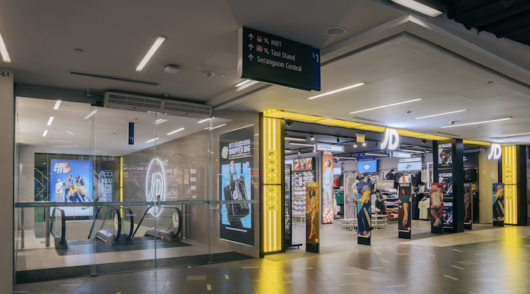Remember the early days of the pandemic? When locked down consumers were buying everything from loungewear to air fryers and warehouses across the world were being cleared as supply chain disruption hit hard.
Today couldn’t be more different. Retailers are suffering from ‘inventory bloat’ or too much stock. In order to de-risk and become less dependent on global providers and their delivery time frames they bought too much stock they are now struggling to sell. This means retailers are under a huge amount of pressure this holiday season to clear stock, to release capital and reduce spending on storing it all in warehouses.
A recent Accenture survey found nearly all retailers (99 per cent) had increased their promotional activity as part of their holiday plans. Another 35 per cent said their companies are deeply discounting or taking other measures to get rid of excess inventory.
But more stock means more sales, doesn’t it? That’s a good thing for retailers? Well, not if everyone has it. Only the ones who know exactly where their stock is and how much of it they have in each location will be able to sell it all. And more importantly, not frustrate their customers by selling too much. In this article I’ll discuss what overselling is, why it’s bad and what retailers can do to avoid it.
What Is overselling?
Overselling is not simply running out of stock. Overselling is running out of stock but still allowing consumers to complete purchases anyway. This might be because you sold out on a marketplace, you’ve got your stock levels wrong, didn’t have enough safety stock, or you weren’t quick enough to update your inventory.
Why is overselling bad?
Allowing a customer to proceed to check out, only to later email them with “sorry but we can’t fulfil your order” not only damages your brand image for that particular customer but if they leave negative feedback, it could damage your reputation for many more potential customers to come.
In a report Fluent Commerce commissioned this year ‘Top Holiday Shopper Trends 2022’ which surveyed 4041 respondents across the US, the UK, Germany and Australia, 68 per cent of consumers said it would damage their view of the retailer if they went to purchase an item and it wasn’t actually in stock when it said it was online. It is unlikely retailers will get a second chance with their customers if they have disappointed them and a competitor is waiting in the wings ready to fulfil that order.
Overselling often leaves the retailer with a cost they can’t recoup, having spent money on acquiring that customer, online advertising spend, e-commerce platform fees, payment capture fees and the cost of managing the refund.
Finally, overselling of course means that you’ve sold out and therefore you’re missing out on lots of potential sales and customers. But have you really sold out? Or do you maybe have stock still left sitting in a location where your online customers can’t access it? In that case, you are both disappointing customers who would like to buy the item as well as not selling the items you do have.
How to prevent overselling
There are a number of precautions that as a retailer you can take in order to prevent overselling.
1. Stock checks
Conducting regular and spot-check stock checks ensures that your stock level figures are correct and your sales channel(s) are accurate. This will help to prevent overselling.
Having one view of your inventory – and stock in stores, distribution centres and warehouses – is key to knowing how much stock you have, at any given time. But it also, perhaps, more importantly, tells you where that stock is.
2. Update your sales channels
If you’re multichannel selling and you’re listing your stock, in full, on each channel, you need to be on the ball. Ensure that when your stock drops on one channel, you’re quick to update all of your other channels. That means changing the stock on Amazon, Ebay and your own website, to avoid overselling.
3. Improve planning
Forecasting demand successfully is a challenge for all retailers. Understanding where your items are ordered from (not fulfilled from) enables you to replenish orders quickly and in the right place to ensure fewer ‘out-of-stock’ occurrences.
For example, typically, if a store is running low on stock of an item, that store will receive a replenishment order to increase stock. But what if half of that stock was used to fulfil online orders because there was no stock located nearby? An optimal replenishment strategy would be to send more to the stores closer to the source of demand, and less to the store that is further away. If the stores closer to the customer had been in stock, they would have sold more, and the cost of delivery would have been lower, due to the shorter distance the goods needed to travel.
4. Get a quality OMS with real-time inventory
If you have a quality distributed order management system (OMS), all of your sales channel(s) are automatically updated with your stock levels, in real-time. The system can assign buffers for popular items, which prevents overstocking and means that you never oversell (or undersell) again.
Automatic reporting can help identify peaks in demand and you’ll be able to see what is available across all locations and then allocate stock according to where and when it is needed. You can even flag damaged items, so unsaleable inventory won’t be shown in online channels.
So don’t be caught out this holiday season selling stock you don’t have. A quality order management system with real-time inventory will help you sell the stock you have in the most efficient way, prevent overselling and enable you to respond and adapt much more quickly to your customer’s buying behaviour in the future.







